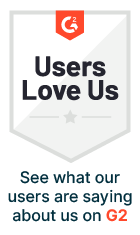
Updated on by Guest Post
For the past 22 years, Salesforce has been a leader in cloud computing. With the name comes big expectations. Individuals and companies look to Salesforce for an innovative impact on their business.
Most likely, these are the reasons that led you to this article.
Many businesses have taken advantage of integrating with Salesforce. That is, connecting their current business applications with Salesforce to enhance processes. This is one of the most popular features of SaaS. It may be one of the least understood challenges that can arise.
Teaming up with a successful tech giant is exciting, but also requires skill and experience to do it well.
It’s important to know what obstacles you might come up against and how to overcome them before tackling an integration project. In this article, we’ll dive into the ins and outs of Salesforce integration.
Salesforce: A Revolutionary Product
Salesforce is the pioneer of the “no software” movement. They market themselves as cloud technology that is affordable, user-friendly, easy to set up, and high-speed. A system that integrates smoothly with existing software platforms. They are the world’s #1 CRM, and for good reason.
Established in 1999, Salesforce was built on the belief that the software should be available through the cloud, to the masses, on a 24/7 basis. The idea was to eliminate the middleman. They wanted to do away with the extra expense to hire software giants to install stand-alone computer software within a company’s walls.
This was a revolutionary concept. Despite a lot of pushback, the Salesforce team accomplished what they set out to do.
Salesforce is a customer relations management (CRM) software tool. It stores client contact information, identifies sales opportunities, keeps records of service issues, and manages marketing campaigns.
Many businesses use Salesforce to engage their customer base with personalised digital marketing. Through automation technology, business professionals can easily market themselves as trusted advisors. Advanced settings for tasks and emails keep both the user and the client on track.
But, it’s not only the bells and whistles of the software itself that make Salesforce a leader in digital marketing. The company has a solid ecosystem made up of customers, developers, and partners. A whole community is committed to the success of its customers. This allows them to connect with others, ask questions, and provide feedback to the Salesforce team.
Salesforce also boasts a team of engineers and data security professionals, dedicated to ensuring your data is secure.
With such a robust system and so many options already made available within Salesforce, why do people still integrate other applications?
The integration connects various applications to improve functionality. There is a wide range of possibilities for users to raise the bar in their daily work and projects by connecting other software applications to their main operations system. Doing so also gives users access to these other applications through one simplified login.
Integrating with Salesforce
Besides all-in-one access, integrating with Salesforce increases productivity. One can access all integrated systems, enhance communication, automate workflows, improve reporting, and streamline processes to reduce operating costs.
Salesforce integration improves the user and customer/client experience by bettering CRM capabilities. An example of this is the Salesforce integration with Dropbox. Important documentation is stored in one place, easily retrievable by users and clients. This removes the extra back-and-forth between Dropbox and Salesforce. It simplifies communication with clients, thus, increasing efficiency.
One of the more popular ways that businesses are utilising Salesforce integration tools is to drive business-to-business (B2B) exchanges. Applications such as Pardot or ActiveCampaign amp up the Salesforce platform. They add lead nurturing and scoring, ROI reporting, and more intricate analytics to track prospects at several touchpoints.
Users can customise real-time notifications when a prospect is active and showing indications of making a purchase. There are also non-technical workflows for creating branded email marketing campaigns.
This all sounds great, right?
It’s easy to get caught up in the hype of all Salesforce and its integrations have to offer. The reality is, if you don’t know how to integrate applications, you could be spending more time managing your integration project and less time using the tools.
Making Connections
Many IT professionals will tell you it’s best to let them handle the complexities of integration. This includes communication with third parties. That said, it can still be a tricky process.
For one, system and application dependencies can muddle up integration testing. The cloud has grown and continues to grow in leaps and bounds with many new apps developed frequently. Although many of these applications claim to provide greater flexibility and cost savings, not all these apps are designed to “talk” with other applications.
Overcoming one hurdle may lead to another in the integration process. There’s a bit of a stop-and-go, and patience is key. But, technological advancements have helped to improve solutions.
One advantage of using a platform like Salesforce is having access to a suite of low-code integration tools. Developers and non-developers alike find ease when transfiguring applications and adding functions and features, as little to no software programming knowledge is necessary.
That takes us to APIs. Applications integrate through connectors, known as APIs (Application Programming Interfaces). APIs are the function of a server that receives requests and sends responses. There are whole companies dedicated to creating and developing API connectors.
Essentially, low-code platforms thrive off of APIs. Custom and prebuilt connectors are created to give users the ability to build powerful apps more efficiently. This ultimately reduces the headaches for IT and the cost to users as well.
Turning Challenges Into Opportunities
When it is said and done, integrating with Salesforce can be one of the best decisions for your business. Despite potential challenges that will arise, there are viable solutions to the integration woes. Low-code tools are available and are key to reducing the time and stress put into developing apps, so you can spend more time on refining your processes instead.
Before you get started with a Salesforce integration, collaborate with a developer or IT professional. Find out what obstacles you may run into.
Not sure where to turn? Try using Cyclr to integrate your application with Salesforce and help navigate the application integration process through low-code. Contact us today for more information.
